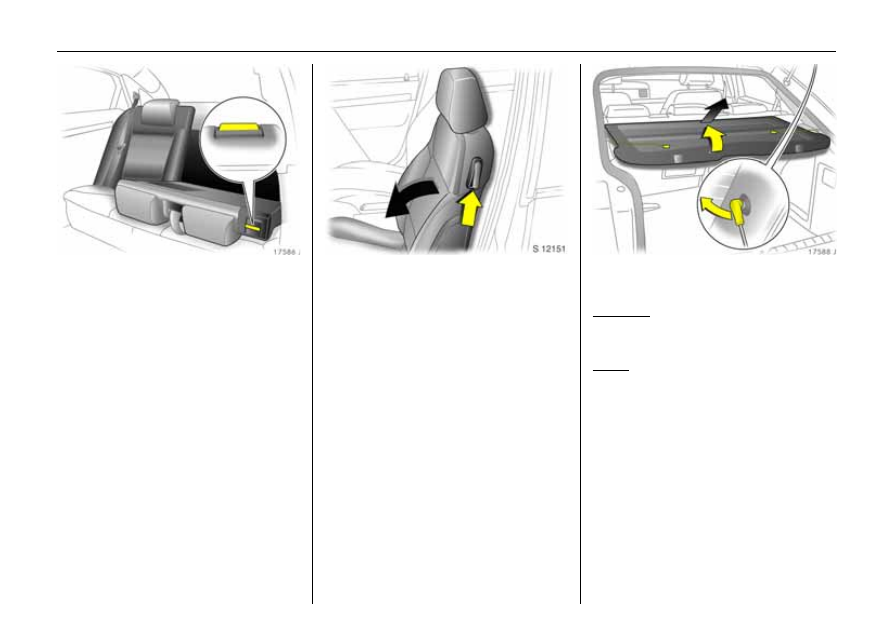Vauxhall Vectra (2007 year). Manual - part 5

66
Seats, interior
Restoring ba ckrest to an up right position
Audibly engage the rear seat ba ckrests.
There is a locking indicator on the release
lev er. If the rear seat ba ckrests ha ve b een
correctly locked the red indicator on the
release levers must not be visib le.
Fold ing down the front passenger’s
seat 3
Push head restra int on front passenger’s
seat down as far as it will g o.
Slide front passenger’s seat backw ards.
Fold front passenger’s seat forwards by
ra ising release lever.
To restore, raise the release lever, restore
the front seat back rest to an upright
position and audibly engage.
Notes on loading
See pag e 71.
Luggage com partment cover
3
5-door Ha tch
Removing
Detach retaining stra ps from tailgate.
Pull cover from the side guides.
Fitting
Eng age cover in side guides and fold down.
Attach reta ining straps to tailgate.